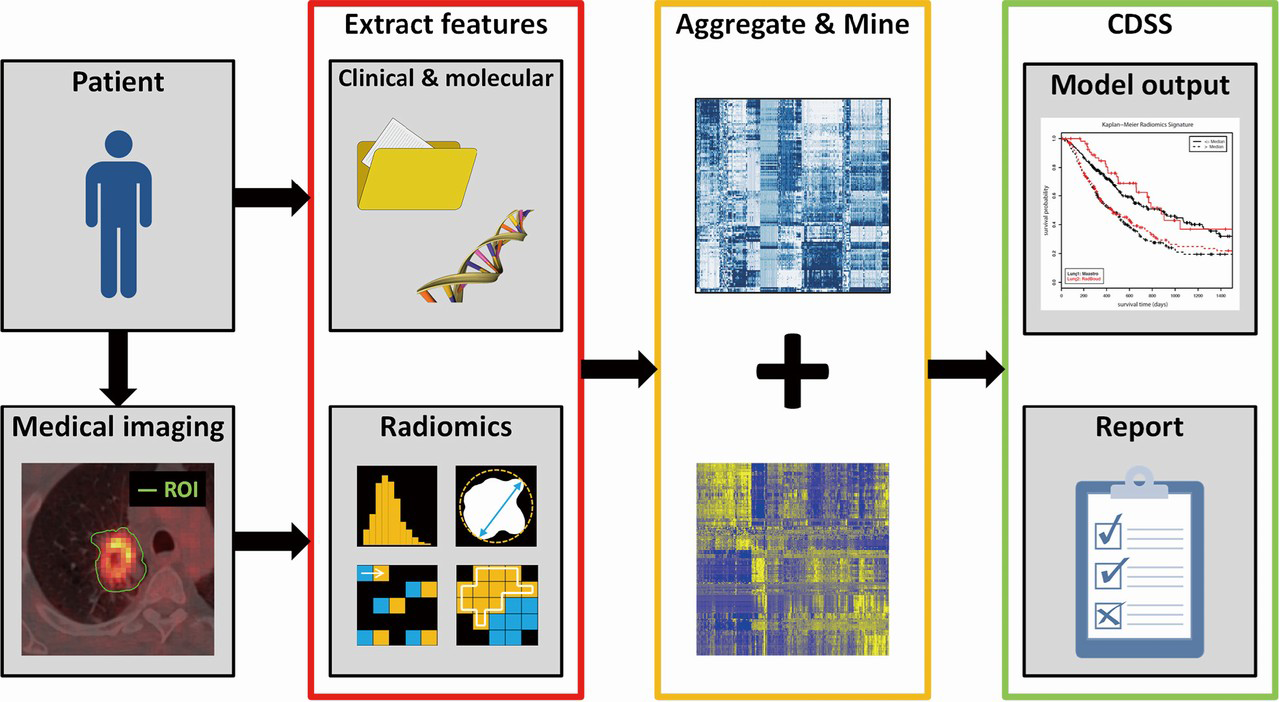Blog Author: Archita KhaireLung cancer is the second most common cancer in both men and women.  Image Credit: Cancer.org The American Cancer Society’s estimates for lung cancer in the United States for 2021 are as follows: About 235,760 new cases of lung cancer (119,100 in men and 116,660 in women) About 131,880 deaths from lung cancer (69,410 in men and 62,470 in women) Image Credit: American Lung Association There are two main types of lung cancer, and they are treated very differently. Small cell lung cancer (SCLC) Small cell lung cancer is fast-growing lung cancer that develops in the tissues of the lungs. The types of small cell lung cancer are named for the kinds of cells found in cancer and how the cells look when viewed under a microscope. - Small cell carcinoma - Combined small cell carcinoma Image credit: https://doi.org/10.1016/j.omto.2021.02.004 Advances in genomics, machine learning, and the development of new mathematical models have facilitated insights into the intratumoral heterogeneity and specific genetic alterations of #SCLC. The SCLC subtypes are defined by the relative expression of four key transcriptional regulators:
Adenocarcinoma starts in the cells that would normally secrete substances such as mucus. Squamous cell carcinoma starts in squamous cells, which are flat cells that line the inside of the airways in the lungs. Large cell (undifferentiated) carcinoma can appear in any part of the lung. It tends to grow and spread quickly, making it harder to treat. Diagnosis Lung cancer occurs when people breathe in dangerous, toxic substances. Smoking is the number one cause of lung cancer, followed by radon exposure as the second most common cause. Small-cell lung cancer is almost always associated with cigarette #smoking. Image Credit: Translational Cancer Research, Vol 5, No 4 (August 2016) / Radiomics applied to lung cancer: a review A deep learning model can detect patterns on chest computed tomography (CT) scans to identify smokers at high risk for Lung Cancer. This method is commonly known as Radiomics and proceeds in two phases: a training or feature selection phase and a second testing or application phase. During the training phase, algorithms automatically extract quantitative features from medical images. In the testing phase, the #Radiomics are applied to a particular patient’s image, with the process being similar to the training phase, but now the selected features are identified by the algorithm, extracted, and then used to classify the patient. Here is a sample dataset if you want to build your own image classifier for chest CT scans. Particle pollution is also considered one of the influential long-term factors of lung cancer. Particle pollution refers to a mix of tiny solid and liquid particles that are in the air we breathe. Many particles are so small as to be invisible, but when levels are high, the air becomes opaque. Treatment Depending on the type and stage of lung cancer, doctors recommend a combination of surgery (VATS), radiation therapy, chemotherapy, targeted drug therapy, Immunotherapy, and Radiofrequency ablation to treat the lung cancer. Researchers are working to augment Video-assisted thoracic surgery (VATS) with robots powered by artificial intelligence to make it minimally invasive. Da Vinci surgical robots are the first FDA-approved AI-powered robots used for thoracic surgery. AI models are now used for real-time monitoring of cancer cell death during Radiofrequency ablation (#RFA) Image Credit: doi: 10.1136/jitc-2020-001343
Immunotherapy uses drugs to help a patient's immune system fight cancer. But some patients are at risk of a paradoxical response called 'hyperprogression.' Researchers are now using AI models to identify the patients who are at harm by immunotherapy. References
Comments are closed.
|
Page HitsAuthorArchita Archives
January 2023
Categories |





 RSS Feed
RSS Feed